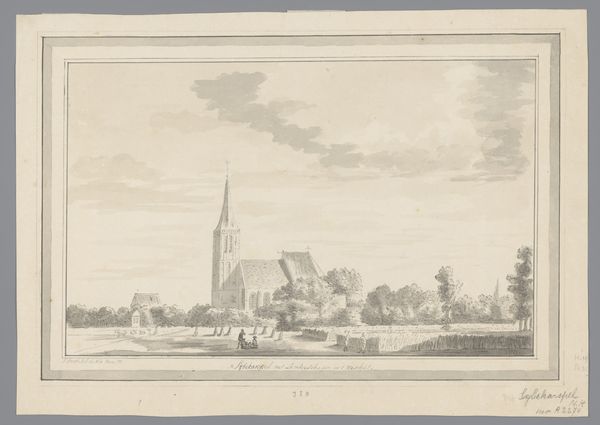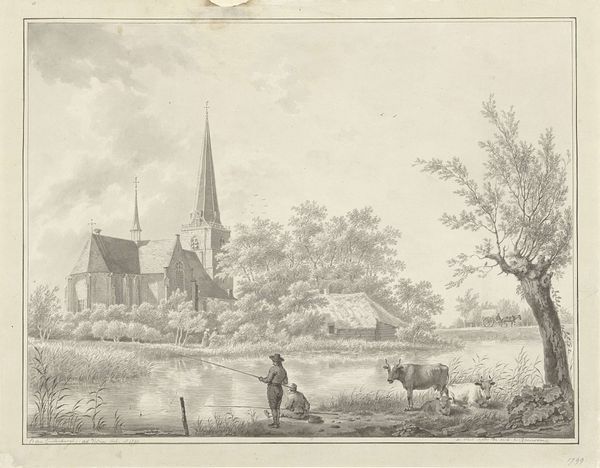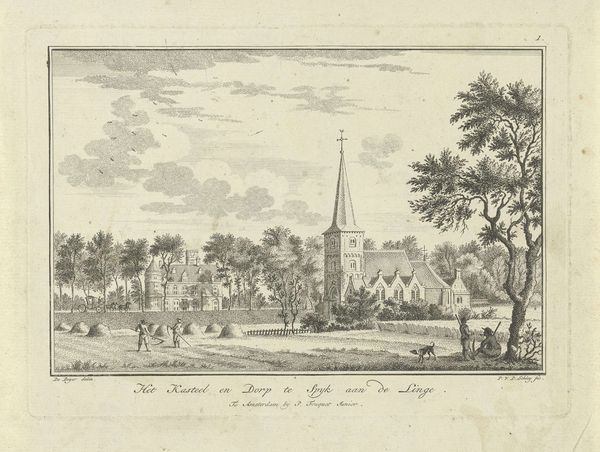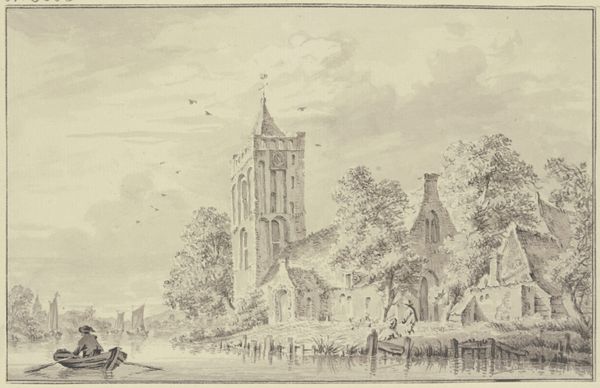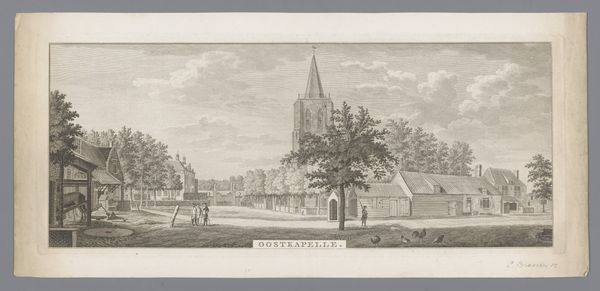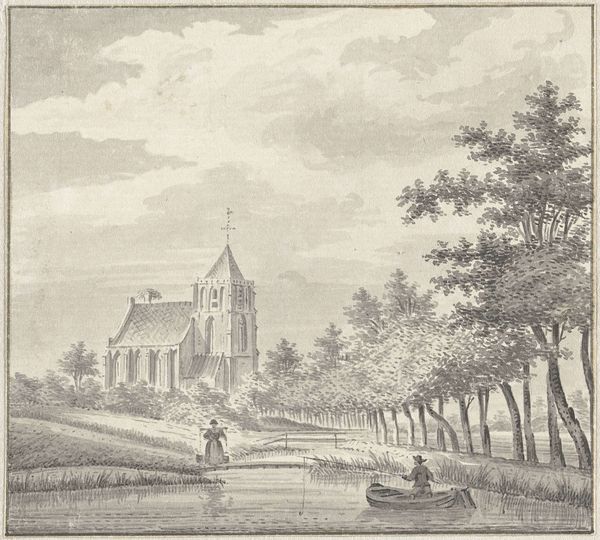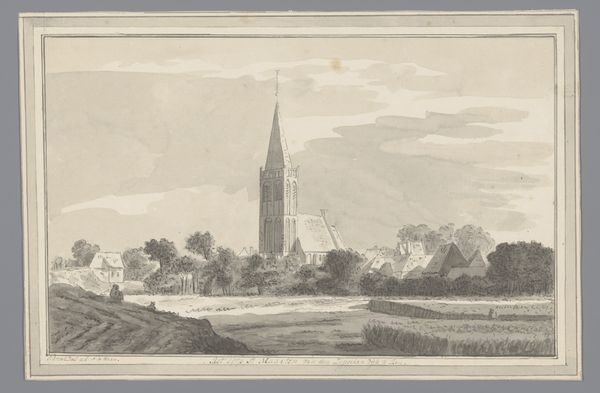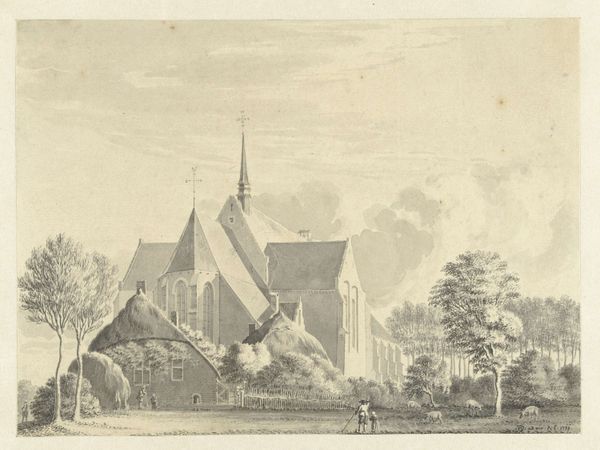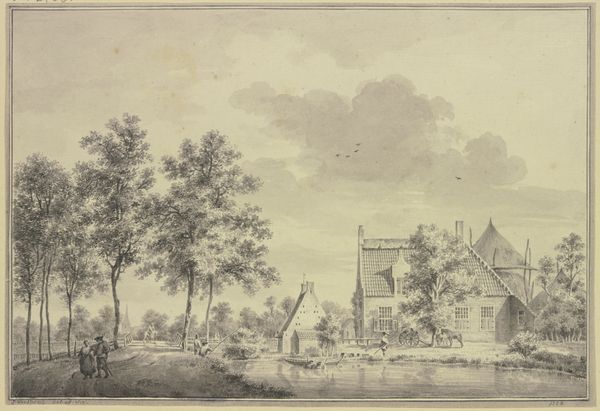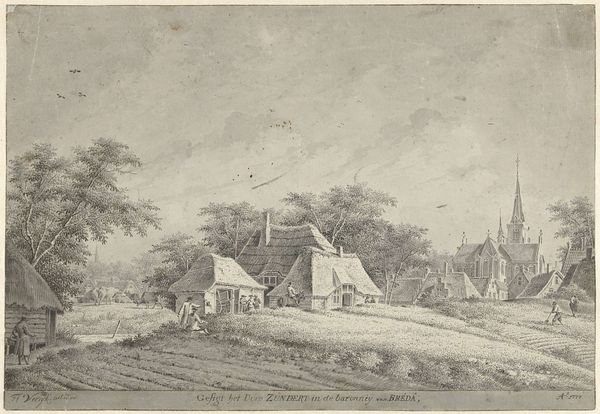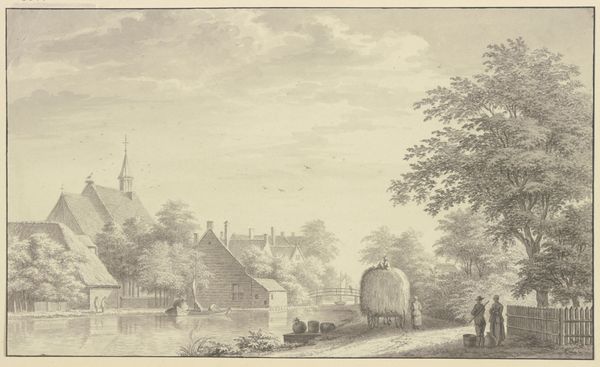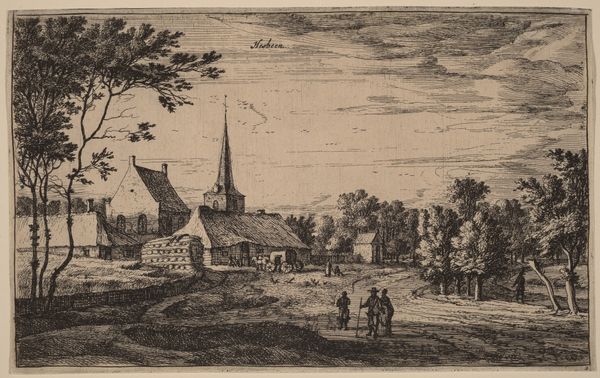
drawing, paper, ink
#
drawing
#
netherlandish
#
landscape
#
paper
#
ink
#
15_18th-century
#
cityscape
Copyright: Public Domain
Editor: So, this is "View of Aldeboarn," a Netherlandish cityscape done in ink on paper by Jan de Beijer, though we don't have the specific date. I'm struck by the subdued, almost dreamlike quality. How would you interpret this work? Curator: The entire composition directs our eye toward that prominent church spire, doesn't it? Religious architecture often represents more than just a place of worship. Consider its presence within the community, marking time and belief systems. The clouds mirror the shape and scale of the spire, underscoring spiritual symbolism. Does this pairing evoke anything specific for you? Editor: The shared shapes definitely create a visual echo...maybe a reminder of faith watching over everyday life? Curator: Precisely. Note, too, how De Beijer positions the figures and livestock in the foreground, relatively small. They exist in harmony with, and perhaps subservient to, both the landscape and that architectural symbol. What emotions are present? Are the humans engaged? Editor: They appear to be living very simple lives. Curator: The figures seem very small relative to the imposing church in the middle ground. How do the understated figures speak to ideas of resilience or humility? Consider how De Beijer has used commonplace images in art to suggest larger emotional landscapes or cultural memories that still speak to us today. Editor: So it's less about the town itself, and more about what the town *represents* symbolically, culturally. It's fascinating how the artist distills a sense of place into a few key symbolic elements! Curator: Exactly. We see not just Aldeboarn, but an embodiment of Netherlandish life and faith in that period. We have also looked together how artists often speak across eras through symbols!
Comments
No comments
Be the first to comment and join the conversation on the ultimate creative platform.
